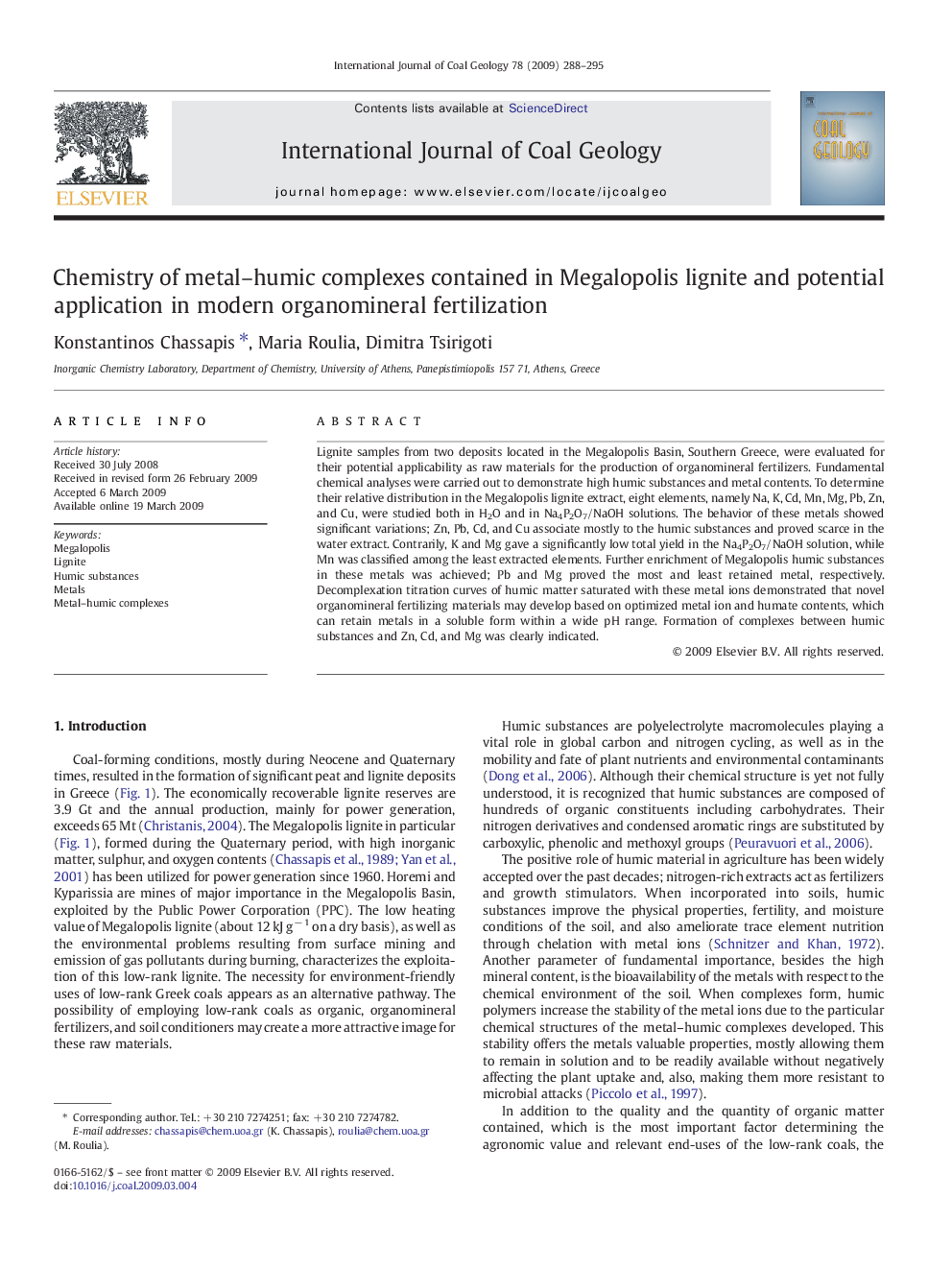| Article ID | Journal | Published Year | Pages | File Type |
|---|---|---|---|---|
| 1753956 | International Journal of Coal Geology | 2009 | 8 Pages |
Lignite samples from two deposits located in the Megalopolis Basin, Southern Greece, were evaluated for their potential applicability as raw materials for the production of organomineral fertilizers. Fundamental chemical analyses were carried out to demonstrate high humic substances and metal contents. To determine their relative distribution in the Megalopolis lignite extract, eight elements, namely Na, K, Cd, Mn, Mg, Pb, Zn, and Cu, were studied both in H2O and in Na4P2O7/NaOH solutions. The behavior of these metals showed significant variations; Zn, Pb, Cd, and Cu associate mostly to the humic substances and proved scarce in the water extract. Contrarily, K and Mg gave a significantly low total yield in the Na4P2O7/NaOH solution, while Mn was classified among the least extracted elements. Further enrichment of Megalopolis humic substances in these metals was achieved; Pb and Mg proved the most and least retained metal, respectively. Decomplexation titration curves of humic matter saturated with these metal ions demonstrated that novel organomineral fertilizing materials may develop based on optimized metal ion and humate contents, which can retain metals in a soluble form within a wide pH range. Formation of complexes between humic substances and Zn, Cd, and Mg was clearly indicated.
